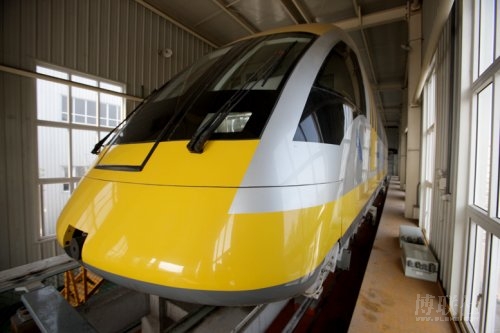
A new maglev train that may one day provide an alternative to existing public transport systems is set to roll off the production line in April, the Beijing Daily reported yesterday.
Liu Zhiming, chairman of Beijing Enterprises Holdings Maglev Technology Development Co Ltd, which developed the train in cooperation with the National University of Defense Technology, said the magnetic levitation locomotive is a low- to medium-speed train, with a top speed of 120 kph.
The technology it uses was wholly developed in China, Chang Wensen, chief designer with the university's maglev technology research center, said.
The new train offers huge potential for public transport, Liu said.
The Shenzhen metro company approached Beijing Enterprises and asked it to conduct a feasibility study into the use of the maglev technology for the city's No 8 urban rail project, Liu told China Daily.
The study was started in December and will be completed next month, he said.
"But it's still too early to say if Shenzhen will become the first user of our technology," he said. "They want to compare the pros and cons of using maglev as opposed to the traditional light rail option."
At present, only Japan has a low-to-medium maglev line in commercial operation.
Several research institutes, including Southwest Jiaotong University, the scientific research institute of the Ministry of Railways, and the Institute of Electrical Engineering under the Chinese Academy of Sciences, have launched and later aborted similar research projects.
The locomotive developed by Beijing Enterprises has been in testing for the past eight years. In that time, it has traveled some 30,000 km on the firm's two test tracks in Changsha, Hubei province, and Tangshan in Hebei province.
"The maglev train will be ready to go into mass production once it has completed 100,000 test kilometers," Liu said.
The use of low-to-medium speed maglev trains for urban transport has won support from several experts.
Sun Zhang, a professor at Tongji University, was quoted by Beijing Business Today as saying that while the system has a similar operating speed to the subway (average 80 kph), the maglev train is cheaper to build and run.
Also, compared with light rail options, the maglev is less noisy, has a smaller turning circle and better climbing capacity, he said.
The public need not worry about electromagnetic radiation, as low-speed maglev trains generate no more radiation than an average TV set, Liu said.
(China Daily February 18, 2009)